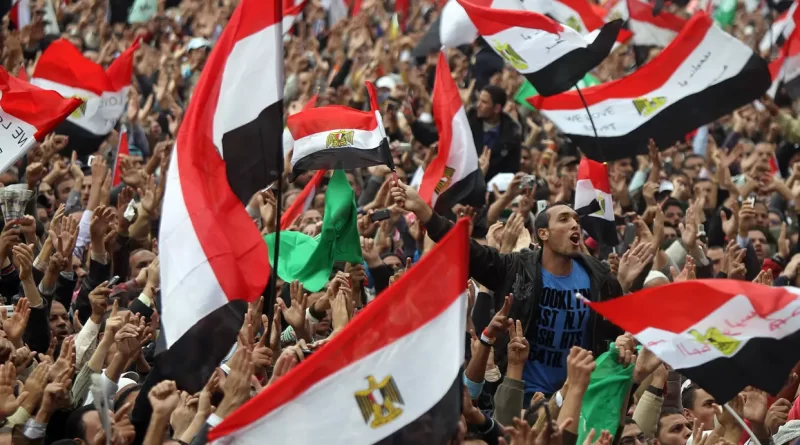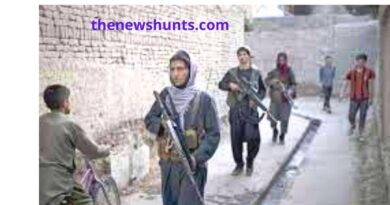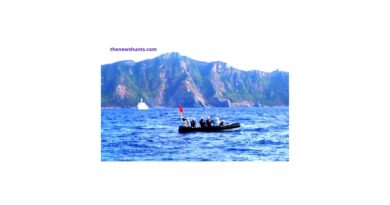Explained: What became of the ‘Arab Spring’?
Tunisian President Kais Saied will secure more forces under the new constitution which is expected to pass the referendum on Monday, in what criticized by critics is the government of one person for one person over a country that rose against dictatorship in 2010.
The opponents of Saied were worried that the change would give a big blow to democracy in Tunisia, widely seen as the only success story of the “Arab Spring” rebellion against the autocratic government in other places ended with new repression and civil war.
Mohammed Bouazizi’s fruit seller burned himself on December 17, 2010 after a local official confiscated his barrow. Protests spread from his city, Sidi Bouzid, throughout the country, turned deadly. President Zine El-Abidine Ben Ali fled on January 14, 2011, inspired the rebellion elsewhere. Tunisia held the first Democratic election in October, won by Moderate Islamist Ennahda which had been banned under Ben Ali. The new constitution that established a parliamentary system was agreed upon in 2014, and Tunisia chose members of their parliament and president in free and fair elections, the latest in 2019. However, economic problems cause difficulties and disappointment. Illegal emigration to Europe increases. The economy, very dependent on tourism, was beaten very hard by Covid-19.
In July 2021, President Kais Saied Froze Parliament and fired the government -moving his opponents called a coup but was welcomed by Tunisians who were fed up with political quarrels and paralysis.
A year later, Saied called a referendum about the new constitution that strengthened the president, limiting what his opponents called the rule of one parade to one person. Saied said that freedom would be protected.
EGYPT
President Hosni Mubarak has been in power since 1981, but a large anti-government protest began on January 25, 2011 when activists mentioned “Anger Day”, which was inspired by Tunisia. When hundreds of thousands of protesters gathered after Friday prayers three days later, Mubarak mobilized the military. Protest collecting momentum, the police were pulled from the streets and the army stands back until Mubarak resigned – to be tried in August on charges of abusing power and killing demonstrators. Ikhwanul Muslimin, which was banned from winning the 2012 elections, but a year later the military, was driven by anti-kemusan protests, overthrowing the new president, Mohamed Mursi, who was imprisoned and died in 2019. Army Head Abdel Fattah El-Sisi was replaced by him as president. Groups of rights that document violations in strong actions against differences of opinion and the military faced a long-standing rebellion from Islamic militants in Sinai.
YEMEN
The crowd took to the streets against President Ali Abdullah Saleh from January 29, 2011, distinguishing divisions in the Army and between the political blocks. Saleh was injured in an attempt to murder in June 2011, forcing him to seek treatment in Saudi Arabia. Gulf countries mediate the transition agreement including “National Dialogue” which aims to resolve the Yemeni problem, with the old representative Saleh Abd-Rabbu Mansour Hadi becomes president until the general election. With the Al Qaeda uprising that blazed in the East, Sanaa faced a new problem in the north of the Houthi Alied Iran group and from the southern separation movement which was revived. In 2015, after Houthi won Sanaa, Saudi Arabia and its allies began a military campaign to keep Hadi in power – war that immediately reached bloody deadlock, worsening the shortage of food and cholera outbreaks. Former President Saleh was killed in a roadside attack in 2017 after switching Sisi, leaving Houthi who was in harmony with Iran for the Saudi -led coalition.
The US weapons that were supported by the US came into force in April, 2022 and Hadi, which had spent years in exile in Saudi Arabia, replaced by the Presidential Council.
LIBYA
In First Benghazi and then Misrata, the protest broke out in February 2011, immediately turned to an armed rebellion against the 42 -year rules of Muammar Gaddafi. In March, the UN Security Council stated the flight -prohibition zone to protect civilians from Gaddafi and NATO forces began an air strike to stop their progress in Benghazi. In August, the rebels had won Tripoli and in October Gaddafi was arrested hiding in a drain outside his hometown in Sirtre and killed.
Local militias won territory and, when chaos took place, the country was divided into 2014 between Western and Eastern factions. The US helped mediate the political agreement in 2015, but in practice the country remained divided and the Islamic state seized Sirtre’s control for more than a year. In 2019, Eastern Commander Khalifa Handlist launched a new war, attacking Tripoli for 14 months before his troops returned. Now the conflict is international, with Russia, UAE and Egypt supporting Handlist and Turkey, the Tripoli government.
The selection supported by the US-section of the peace process aimed at knitting Libya returned together in December 2021 for reasons including disputes over the rules.
In March 2022, parliament based in Sirte appointed a new prime minister but the government based in Tripoli refused to resign, leaving Libya separated between rival administration.
Bahrain
On February 14, 2011, the biggest protest in many years erupted in Bahrain when the demonstrators echoed the call of Egyptian audience for the “Anger Day” to sue the ruling monarchy to provide democracy. When the protesters and police clashed over the next few weeks, sectarian tensions increased in countries where the majority of Shia Muslims had long been conspiring against the Sunni ruling dynasty. On March 14, Sunni neighboring countries, Saudi Arabia sent tanks across the road that connects it to Bahrain to maintain a large installation. The authorities declared martial emergency and cleaned the protesters from the camp which had become their symbols. The protest continued for months, which caused at least 35 deaths, but the monarchy suppressed control of rebellion and recovery.
Syria
When the first protest began to spread through Syria in March 2011, President Bashar al-Assad sent security forces and there was a wave of arrest and shooting. In July, the protesters took weapons and army units joined the meeting rebellion, then supported by the Bay and Turkish monarchy, when Assad responded with air strikes. Full war erupted. When chaos hit the country, the Islamic state group in 2014 won a number of regions, attracting a coalition led by the US to support the Kurdish fighters in the northeast. Support from the Russian Shiite Hezbollah Movement, Iran and Lebanon Shia helped Assad scratch control over most countries, defeating rebels in areas including Aleppo and East Ghouta from 2015-18. At the end of this decade, hundreds of thousands of people were killed and more than half of the pre-war population of the country were displaced by the country partitioned between Assad, a rebel supported by Turkey and the group led by Kurds.



